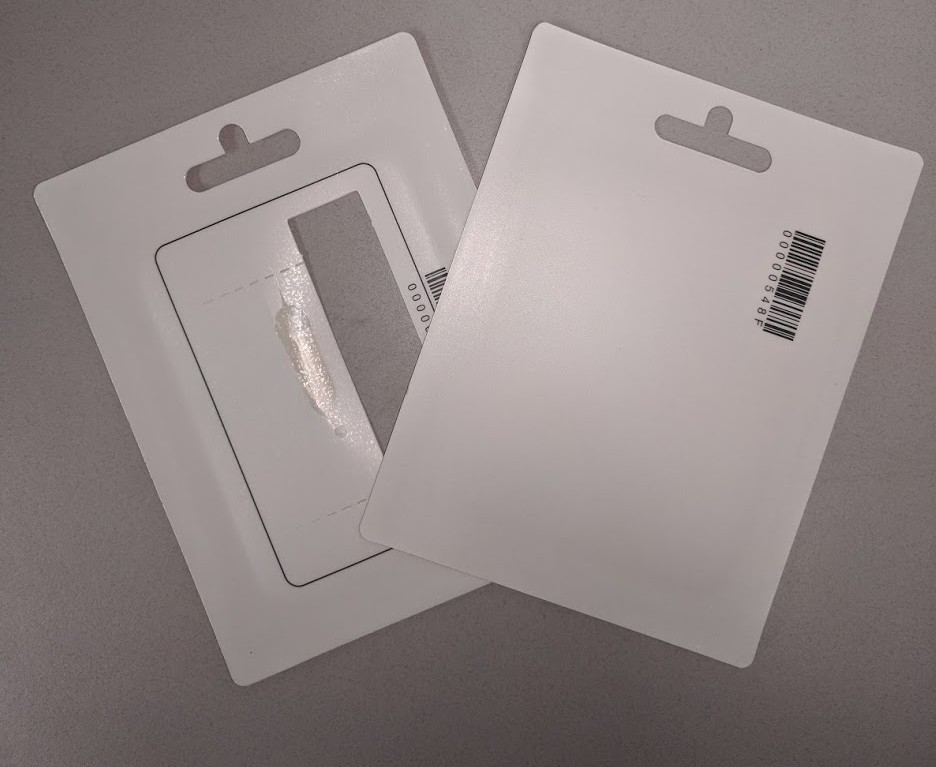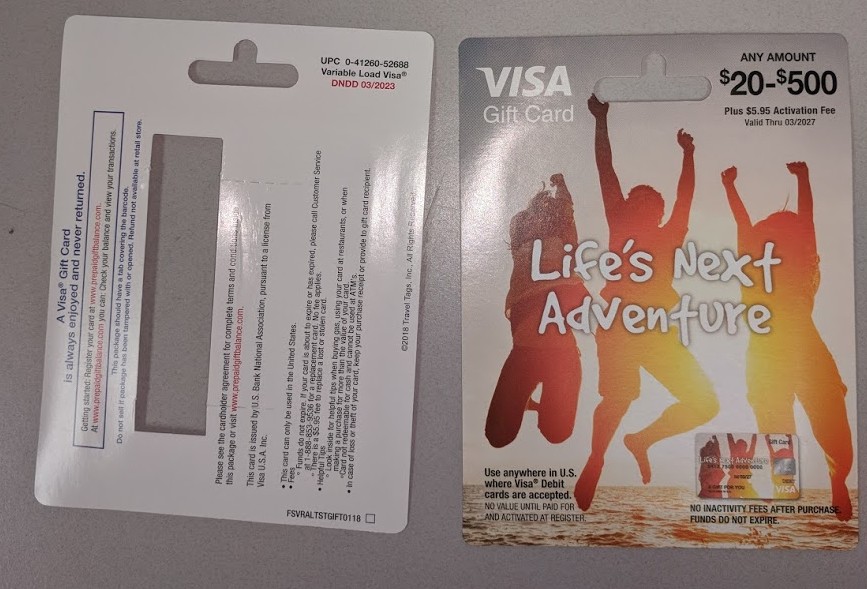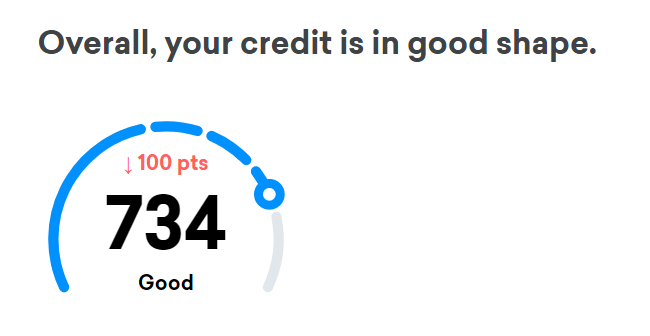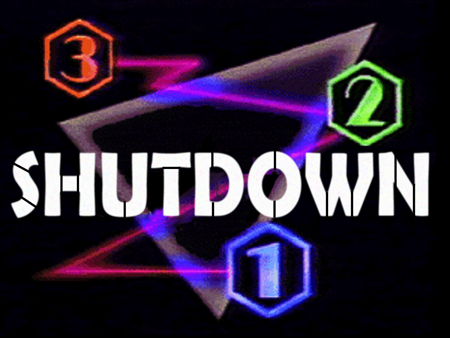I hate that I have to write a post like this (again), but I would be remiss if I didn’t put this warning out there. Years ago there was an issue with US Bank gift card fraud. Cards would be drained after purchase at stores hundreds of miles away. It seemed the cards were opened, cloned and then re-glued shut. I personally was hit with this on three occasions. I detailed one here on the blog, and dealt with the other two privately.
Today I made my purchases of these new “Life’s Next Adventure” gift cards and discovered a serious issue with the packaging of one of the cards. To upgrade their packaging US Bank has made it nearly impossible to remove the back panel without mangling the cardboard. A standard opened package should looks like this:

And indeed, that’s one of the cards I bought today. The package that has me worried was one which had only very light, completely removable glue around the outside of the package. When I went to pull the package open it instantly came apart in my hands, opening cleanly with no sign of entry:

Here’s a second view showing the front of the package:

Why is this a serious issue? Fraudulent people can open these packages, remove the cards, clone them and return them to the racks, gluing the packs shut to make them appear normal. They could also run the scam of placing stickers over the back of the card barcode, activating a second prepaid card that is in their possession and making the card in the pack a dud. Once you buy their compromised card they drain it and you’re stuck chasing down US Bank for your money back.
Fortunately for me, the card was activated and had $500 on it. I drained it immediately, making a special trip because of the potential issue of fraud.
What This Means
This could certainly be a one off occurrence. But given the US Bank gift card fraud we’ve seen in the past I’m not sitting around to find out. The way to detect a pack that has this glue issue is to ‘thumb” the four corners of the package. If there’s no glue you’ll see the sides separate and you’ll know to move onto a secure package. Unfortunately checking for a non-glued pack doesn’t really protect you from fraud because only a moron would fail to re-glue the card package. So maybe the best thing to do is buy these non-glued cards only? (*Sarcasm*)
All kidding aside, The best thing to do is to continue to drain these IMMEDIATELY, within less than 12 hours of purchase. Unfortunately that means that buying and holding these is not a valid option anymore in my eyes. And US Bank, you’ve got a problem on your hands, again, so please address this before it gets any worse.
Update 6/17: Readers have emailed me to remind me that often times these cards are physically deformed to be rendered useless to us, the actual buyer. In those cases draining them becomes impossible. It may be better to call US Bank immediately if you suspect fraud and have the card locked and a new one sent to you. When the new one arrives insist they waive the $5.95 activation fee, which they will attempt to charge you. (Thank you to those who wrote me personally!)





Sorry to hear this happened to you. But I would love to see the look on the criminal’s face when they get excited and see the card has been activated, only to realize it already has a balance of zero.
Glad to hear you came out unscathed. I had this happen once on a $200 MC. Thankfully they sent out a replacement card pretty quickly.
Thanks projectx. If I was a crook I wouldn’t leave it unsealed, I’d glue it back. But I’m no longer believing that US bank has solved their fraud issues.
So the scammers are running a script constantly against the US bank balance checker or trial purchases at vendor sites to know when they’re active? Any clue the scale of how many cards get tampered with?
Dave: I don’t think the community ever figured that part out, and US Bank sure isn’t talking. A few options I’ve thought about: someone at the point of sale is in on it–alerting them when the cards are sold. Second, maybe they hacked into US Bank’s activation server, and received alerts about activated cards. It might have even been more low tech than that–paying a guy $20 to go to each compromised store and check if any cards sold each morning, then checking that store’s ‘batch’ online manually.
It is hard for non-scammers like ourselves to even conceptualize the way that people in that world approach these illegal situations.
How do these US Bank GCs differ in structure design to make them more likely to be hacked? Or are they?
Thanks.
Sam: There are probably whole groups of people who long ago swore off of US Bank cards because there was no rhyme or reason behind how they could be hacked. I’ve had cards which appeared to have never been opened be hacked, sitting in my pocket. Their packaging change signaled that they maybe had solved their issues. Packaging issues like this cause unease over these (for me at least).
Any idea in what way the cards are being deformed so they can’t be used?
Christan: Either they demagnetize the strip or glue over it so you cannot swipe the card.